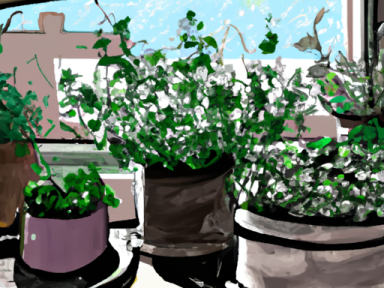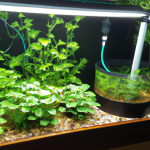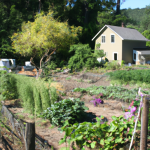Indoor Herb Gardening: A Key to Self-Reliance and Survival
When it comes to preparing for an uncertain future, self-reliance is the name of the game. We have all witnessed how quickly our comfortable lives can be upended by unexpected events. Natural disasters, economic crises, and even global pandemics have the power to disrupt our food supply and leave us vulnerable. That’s why it’s crucial to develop skills that enable us to provide for ourselves and our loved ones in times of crisis.
Why Indoor Herb Gardening is Essential
One often overlooked aspect of self-reliance is growing our own food. While traditional outdoor gardening is an excellent way to secure a sustainable food source, it may not always be feasible. Limited space, harsh climates, or urban living can make outdoor gardening challenging. That’s where indoor herb gardening comes in.
Having a thriving indoor herb garden provides numerous advantages:
- Year-round access to fresh herbs: Indoor herb gardens allow you to enjoy the flavor and nutritional benefits of fresh herbs regardless of the season. No longer will you have to rely on store-bought, possibly contaminated herbs.
- Enhanced flavors: There’s something extraordinary about using herbs you’ve grown yourself. The flavors are richer, more vibrant, and free from the chemicals and preservatives often found in mass-produced herbs.
- Nutritional boost: Herbs are not only delicious but also packed with essential nutrients. Adding them to your meals can provide a natural boost to your health and immune system.
- Cost-effective: Growing your own herbs saves money in the long run. A small investment in seeds and materials will yield a continuous supply of herbs without the need to constantly restock.
Getting Started with Indoor Herb Gardening
Starting your own indoor herb garden is easier than you might think. Follow these steps to ensure success:
1. Choose the right location
Find a spot in your home that receives adequate sunlight, preferably a south-facing window. Most herbs require at least six hours of sunlight per day. If natural light is limited, consider using grow lights to supplement.
2. Select the herbs
Choose herbs that you frequently use in your cooking and are well-suited for indoor growing. Some popular options include basil, thyme, rosemary, mint, and parsley. Start with a few varieties and expand as you gain confidence.
3. Gather the necessary materials
You’ll need pots or containers with drainage holes, potting soil, seeds, and a watering can or spray bottle. Ensure the pots are large enough for the herbs’ root systems to grow and have good drainage.
4. Plant and nurture your herbs
Follow the instructions on the seed packets for planting depth and spacing. Water your herbs regularly, but be cautious not to over-water as it can lead to root rot. Monitor their growth and trim as needed to encourage bushier plants.
The Power of Self-Reliance
By cultivating an indoor herb garden, you are taking a significant step towards self-reliance. Not only will you have a fresh and reliable source of herbs, but you will also gain confidence in your ability to grow your own food. This valuable skill can be applied to other plant varieties and contribute to your overall self-sufficiency.
Remember, it is our responsibility to take action and be prepared. Investing time and effort into learning self-reliance skills like indoor herb gardening can make all the difference when faced with an unexpected crisis. So start today, and let the power of self-reliance guide you towards a more secure future!




GIPHY App Key not set. Please check settings